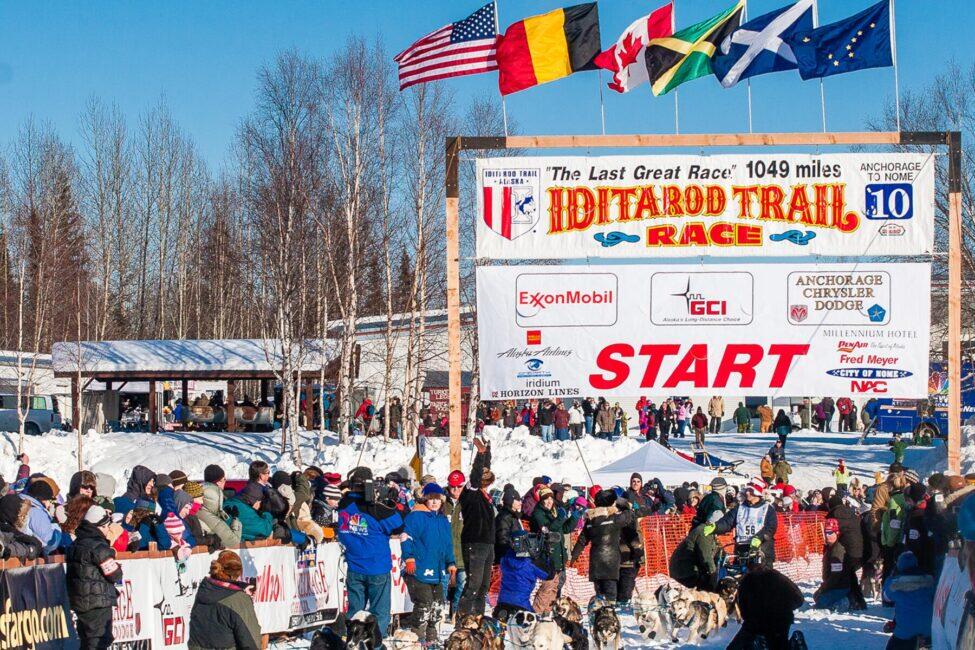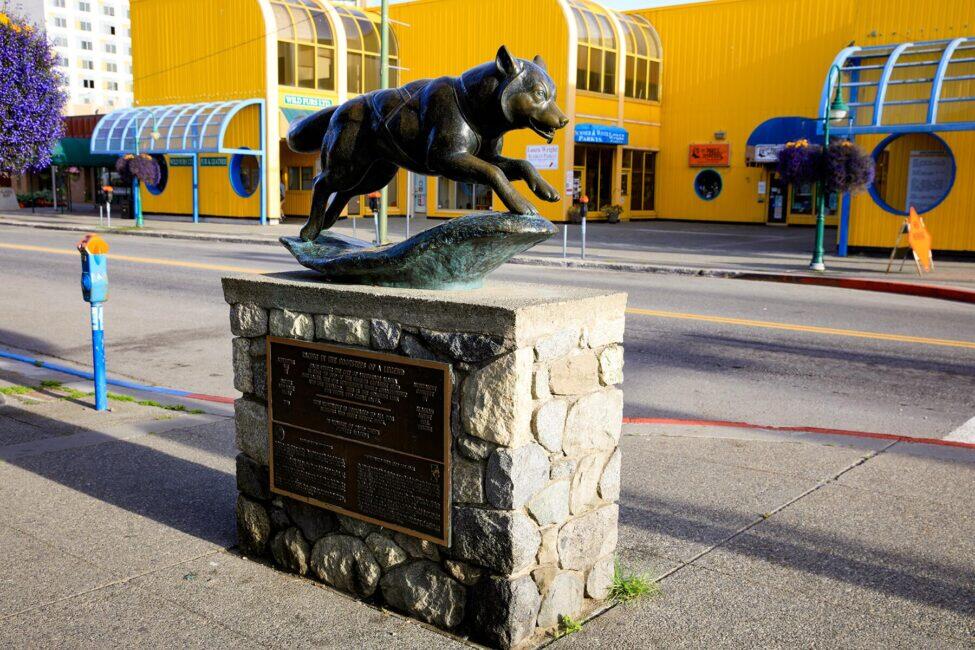Nearly a century ago, sled dogs and their mushers saved a village. Today, their heroic feat lives on in statues and the silver screen.
COVID-19 joins a long list of contagions that have haunted us for centuries, from the Bubonic Plague to polio. Another of those feared diseases, which is now virtually unheard of in the United States, is diphtheria, a highly-transmissible bacterium spread through the air and by touching contaminated surfaces. Microbes invade the respiratory tract, destroying healthy tissue until the dead cells build up into a thick coating; while breathing becomes difficult, resulting in an often drawn-out and terrifying asphyxiation.
Before the development of a vaccine and antitoxin in the 1890s, diphtheria was a leading cause of childhood deaths in the U.S. and around the globe. Even with treatment, outbreaks continued into the 20th-century (and still do in some parts of the world). Therein lies this tale of a desperate battle against this disease in the worst possible conditions. It’s an account of stalwart canines and humans that transfixed the nation, and how their intrepid feat is still memorialized today.
It begins in Nome, Alaska, a remote village two degrees below the Arctic Circle, on the Bering Sea’s Seward Peninsula. In 1924, the former gold rush town was the commercial center for a population of at least 10,000 people. Because the sea froze over from November through June, Nome stocked up on supplies, brought in by the last ship in October, to get them through those unbelievably harsh months.
Recommended Fodor’s Video
Nome’s lone physician at the time, the only one within 400 miles, had placed an order for diphtheria antitoxin to replenish his scant—and expired—stock. The replacements failed to appear in that final delivery. Curtis Welch wasn’t particularly worried, though, since he’d never seen a case in all his 18 years in Nome. Tragically, that was about to change.
The first confirmed case appeared that late December. Since Welch observed only one child among four siblings with symptoms, he concluded the toddler had tonsilitis, a common misdiagnosis in diphtheria’s early stages. More youngsters became sick, and by the end of January 1925, several had died. Welch soon realized the dreaded scourge had invaded his community. The closest serum—some 300,000 units of it—was in Anchorage, but how to send for the vital medicine with Nome’s port completely cut off?

Air delivery was risky. Pilots couldn’t survive the extreme temperatures and furious blizzards in an open cockpit, nor could they navigate in winter’s limited daylight. A railroad line, completed in 1923, could convey the antitoxin from Anchorage north to Nenana. From there, writes Gay and Laney Salisbury in The Cruelest Miles: The Heroic Story of Dogs and Men in a Race Against an Epidemic, the only option “was to rely on one of the oldest methods of transportation ever developed, a network of footpaths and dog trails first blazed by the ancient people of the Arctic.”
That collection of routes, called the Iditarod Trail after a nearby river, originally connected Native settlements. Later, miners used the tracks to reach the region’s goldfields. Now dog sleds would sprint along these ancient trails in a life-saving mission.
The heavily-insulated package of serum departed Anchorage on January 26, 1925. From Nenana, 20 experienced mushers, reflecting Alaska’s Native and pioneer population, conveyed the precious cargo in a round-the-clock relay toward Nome. The drivers handed off the securely wrapped glass vials to the next team at roadhouses along the way.
By now, news of Nome’s plight had reached the rest of the country. “Diphtheria Rages in Nome,” blared a New York Times front-page headline. An anxious public breathlessly followed the teams’ progress. Among the mushers was celebrated driver and dog race champion, Leonhard Seppala. His lead Siberian husky, the energetic and 12-year-old Togo, enjoyed equal renown. Gunnar Kaasen and his dogs, guided by a husky named Balto, also took part.
The teams charged through howling winds and near white-out conditions. Temperatures plunged to minus 62 degrees. At one point, the serum parcel tumbled from Kaasen’s sled. The musher frantically dug in the snow barehanded until he uncovered it.
As Seppala reached Norton Sound, he considered a shortcut across the inlet toward Nome. He knew the ice could break up and strand them, but took the risk anyway to save time. The next morning, the trail behind them had indeed floated away. All in all, he and his dogs logged more miles than any other team.
Kaasen drove the final leg, arriving in Nome early on February 2nd. The 674-mile trip from Nenana to Nome had taken a record-smashing five-and-a-half days. All of America sighed in relief. “The Great Race to Mercy,” as it has since been dubbed, had succeeded. In Nome, the disease quickly petered out.

The use of dogs to haul goods gradually tapered off as closed-cockpit planes took over, and soon the Iditarod Trail fell into disrepair. In the 1960s, Alaskans looking to revive the sledding tradition restored the trail, eventually designing a course from Anchorage to Nome, now known as the Iditarod Trail Sled Dog Race. Every year since 1973, beginning the first Saturday in March, the 1,000-mile contest—mirroring the serum run it honors—receives coast-to-coast media coverage. The competition embarks from a fitting landmark, downtown Anchorage’s Balto sculpture.

The mushers’ names, with the exception of Kaasen’s and Seppala’s, quickly faded from memory. The pairs’ dogs, though, attained greater celebrity. Kassen and Balto posed with the canine statue, unveiled in New York’s Central Park in December 1925. The husky was the subject of a 1925 silent and (highly-fictionalized) animated film in 1995, plus several TV programs and children’s books.
Unfortunately, Kaasen had to sell his team, which ultimately ended up in a sideshow. Dismayed by the fate of the illustrious canines, a Cleveland businessman raised money to purchase them. The seven surviving dogs lived out their final days at Cleveland’s Brookside Zoo (now Metroparks Zoo). Balto’s taxidermied body is permanently exhibited in the city’s Museum of Natural History.
Appreciation for Togo came much later. Seppala sent him into retirement in Maine and, after the dog’s passing, had him mounted and displayed first at Yale Peabody Museum of Natural History (his skeleton remains in its mammalogy collection), then at Vermont’s Shelburne Museum. Togo’s preserved hide now resides at Iditarod headquarters in Wasilla. In 2001, his statue was installed in Manhattan’s aptly-named Seward Park. Togo finally found Hollywood fame in a 2019 Disney+ feature with Willem Dafoe as Seppala. The most important role of Togo, however, went to a dog named Diesel, a descendant of the spirited husky.



